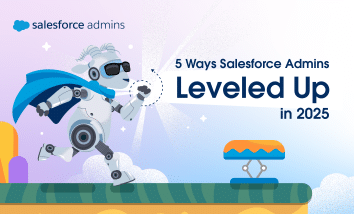Every year, TDX brings together the builders—the admins, developers, architects, IT leaders, and Slack pros who aren’t just imagining the future of work; they’re actively shaping it. And TDX 2026 is already on track to be where the technical content gets sharper, the demos go deeper, and the ideas you hear on stage spark real […]




 Second, be forward-looking. As you keep growing, you need to look toward the future — not just at tomorrow or the next project on your “to do” list. Like our friend Einstein here, get your binoculars out and look waaaaay ahead to the future. In your org, looking to the future means planning and documenting.
Second, be forward-looking. As you keep growing, you need to look toward the future — not just at tomorrow or the next project on your “to do” list. Like our friend Einstein here, get your binoculars out and look waaaaay ahead to the future. In your org, looking to the future means planning and documenting. I learned the lesson on documentation when I dug into a new client’s setup and saw three similar Global Actions in an org. If I’m able to expand to also see a description, I’ll know what differentiates each action, and which to add to the page layout to get the desired results. One Global Action might include default values and another might have automations attached to it. Without the description field, this can get confusing fast.
I learned the lesson on documentation when I dug into a new client’s setup and saw three similar Global Actions in an org. If I’m able to expand to also see a description, I’ll know what differentiates each action, and which to add to the page layout to get the desired results. One Global Action might include default values and another might have automations attached to it. Without the description field, this can get confusing fast. The third major lesson I’ve learned in my decade as a Salesforce Admin is to claim ownership.
The third major lesson I’ve learned in my decade as a Salesforce Admin is to claim ownership.


